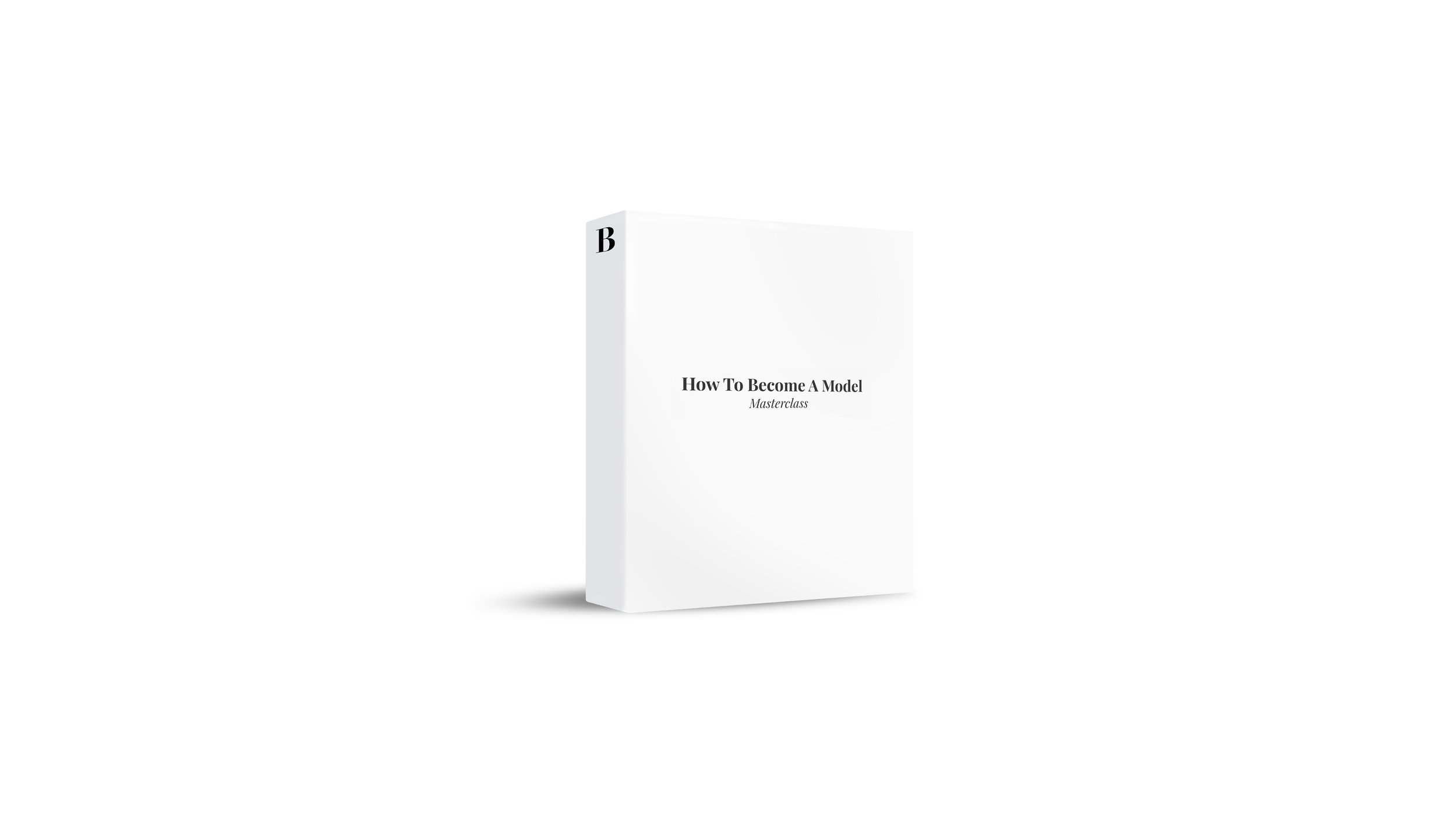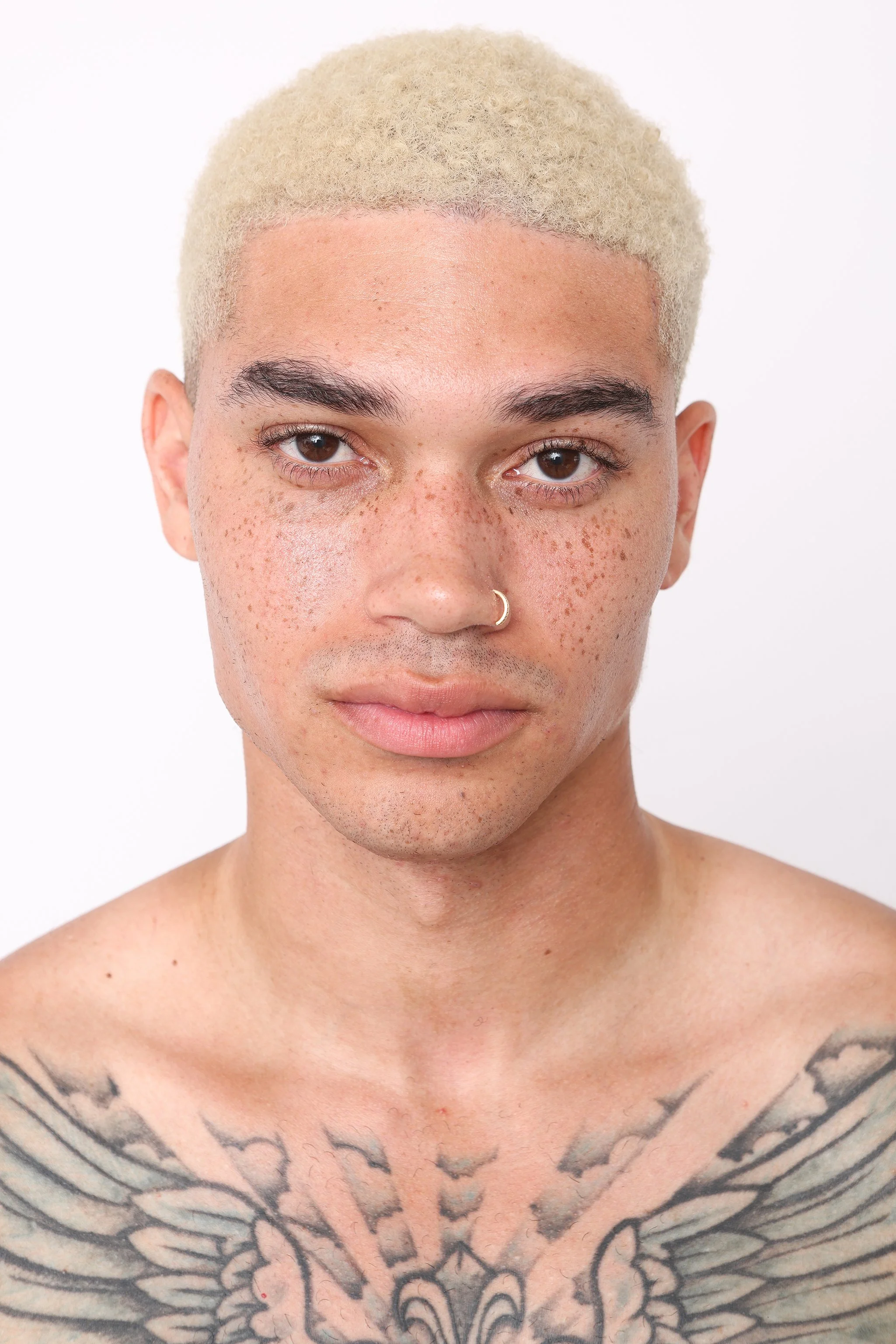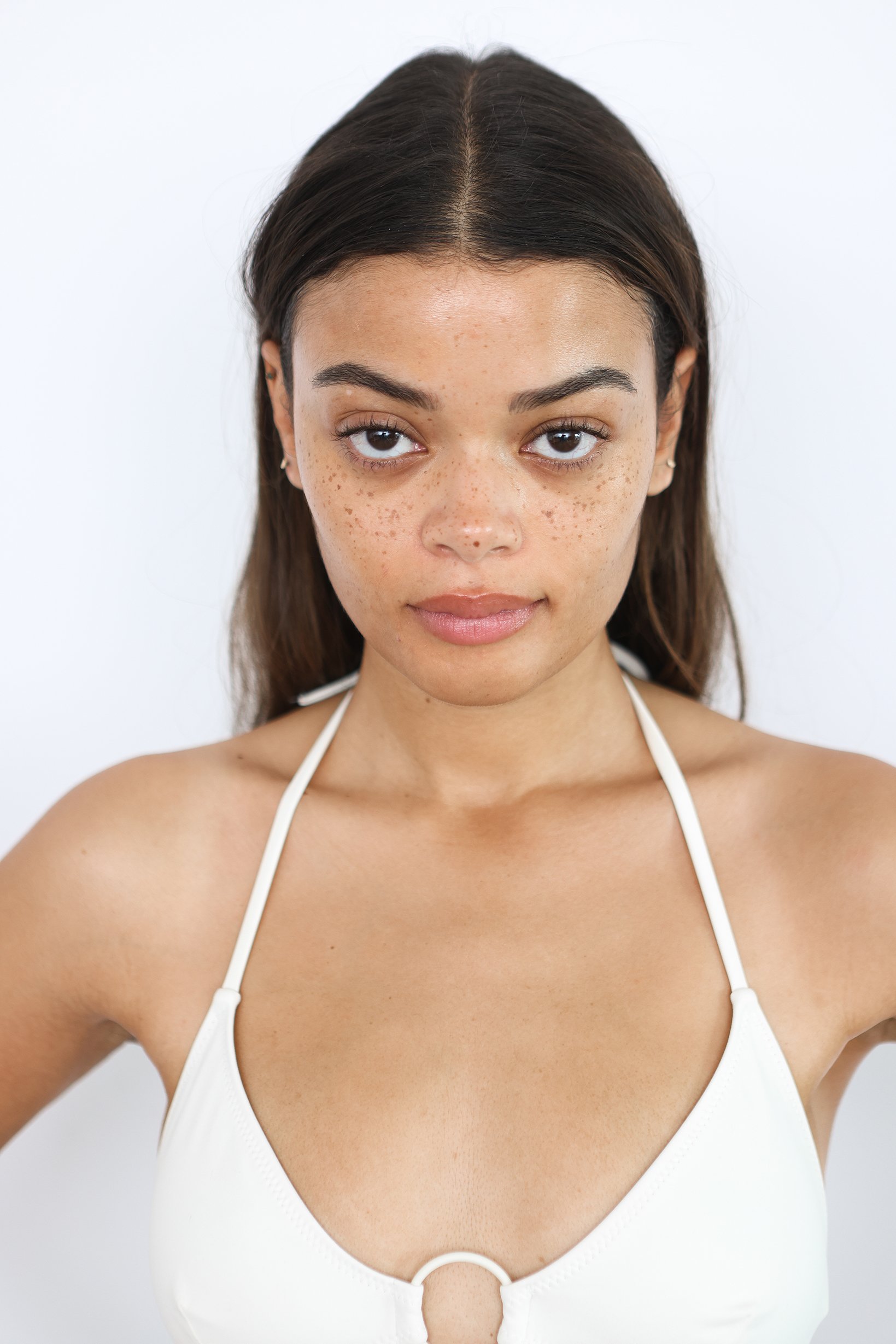Everything You Need To Know About Modeling Digitals
Still need model help? Book a 4omin model coaching call with me now!
Today we're talking about one of the most important aspects of your portfolio: Modeling Digitals. Whether you're just starting out in the industry or you're a seasoned pro, having a set of high-quality model digitals is essential to get noticed by agencies and land those modeling gigs you're dreaming of. Think of digitals as your first impression. They're what agencies use to evaluate your potential and decide whether or not to sign you. That's why it's crucial to have a set of modeling digitals that accurately represents your unique features and personality.
In this blog post, we'll cover everything you need to know about modeling digitals. From how to take the perfect shot to what agencies are looking for, we've got you covered. So sit back, grab a coffee, and let's get started!
What Are Modeling Digitals?
Modeling digitals are a set of photographs that showcase a model's body, face, and features that allow agencies to get a good sense of what the model looks like in real life. They are a collection of simple, unedited, and unretouched images that are lit in a particular way to present the model to agencies or clients as natural as possible. Digitals are often taken with a plain white background and natural lighting to provide a clear and honest representation of the model's appearance.
Why Should I Hire A Professional Photographer To Take Modeling Digitals?
When you are looking to get into modeling, having a professional photographer take your modeling digitals is essential. Not only will they be able to capture the best images of you, but they can also help you prepare for test shoots and build up a portfolio that potential agencies will respond to. A good photographer can also be your first introduction to model development which often occurs on test shoots with photographers after getting signed. There are certain requirements that must be met in order for any agency to consider working with you and these include having digitals taken by someone who knows what they are doing.
A professional photographer who works with models has experience in taking these types of shots which means that the chances for a model to get signed increases with better quality, better lit, and better compositional images to submit. Modeling digitals can determine whether an agency will take interest in you before even a modeling portfolio. By using an experienced fashion photographer, it gives you the chance to ask questions about how best to pose, how to exude confidence, and how to command attention in your photoshoots. This can make all the difference when it comes time for submitting modeling digitals to agencies.
Having strong modeling digitals is one way to stand out from the other applicants so it's important not to underestimate their power when putting together a body of pictures to submit. While agencies may allow for iPhone digitals, often times the higher the quality of the images the better likelihood the model will be well-received since iPhone digitals tend to be taken by untrained or unskilled friends or relatives or worse with a tripod. When you hire a professional photographer to take your digitals, it makes it easier for you and the agency to decide whether you are the right fit for them.
How To take Your Own Modeling Digitals?
Can you take your own digitals? Well, you can, but you also might not want to. In my How To Become A Model Masterclass, I teach you how to take your own modeling digitals if you need to save money or if there are just no good photographers around you. In my class, I take you behind the scenes of my modeling digitals shoots showing you how I get my models to warm up, become confident, and move in front of the camera and I also show you how you can do it yourself. You’ll see that while it’s not very easy or ideal, it is an option for you to attempt at getting digitals that you can submit for a lower cost.
Learn to take your own digitals and everything else you need to know about modeling by enrolling in my How To Become A Model Masterclass now.
Why Do You Need Model Digitals Or Polaroids?
Model digitals or polaroids are the same thing. Back in the earlier days, digital cameras didn’t exist, so they used polaroid cameras instead. It became coined “polaroids” for short much like they are coined “digitals” today. But they mean the same thing, these are photos capturing you at you to showcase who you are and what you look like. Your modeling digitals provide agencies with the first impression of what you look like when they consider whether to offer you a modeling contract. It’s why having great modeling digitals is so important - it can lead to more paid work!
Having quality images in your portfolio is key, particularly if you have clear skin or facial features that need highlighting – something which wouldn't be possible without good lighting from a professional photographer. With our expertise, we can bring out your angles and teach you flattering poses and movement. This training will be useful for once you get signed and land your first gig.
What matters most when taking modeling digitals is making sure that each image captures your personality while also showcasing how photogenic you are. The aim should be to create pictures that don’t just look amazing but communicate to prospective clients who you really are – after all, these images could end up being seen by hundreds of people! To ensure this happens, working with experienced photographers will give those viewing them the confidence to pick you over other models.
How To Pose For Modeling Digitals
When it comes to taking model digitals, there are some important steps you need to follow in order to make sure that your images look like the best version of yourself. Here's a list of 4 things you should do when posing for these photos:
1) Get all angles and distances
Model digitals generally have 3 distances: fully body, 3/4s, and headshots. At each distance, you need to get full frontal shots, diagonal shots, and profile shots. This allows you to have multiple options for whenever agencies or clients are requesting them.
2) Posing
Posing should be minimal. Having a standard posing with your hands by your side while looking directly into the camera is good for all angels. But you can also change up your poses for the forward shots and be a little be more creative while still keeping the movement simpel.
3) Expressions
Your objective is showcase a range of expressions to show how dynamic you are as a model. While model digitals are merely suppose to just show what you look like, it’s also an opportunity to show your model face. So don’t just simply stare blankly in the camera, but give attitude, give emotion, and give a model face.
4) Follow Directions
Finally, if given any specific directions by the photographer, make sure that you follow them so that what they envision can come through in the shots.
By following these four simple tips, anyone can create amazing model digitals that will help them stand out from other aspiring models vying for work opportunities.
What Should You Wear For Modeling Digitals?
When it comes to dressing for digital modeling, the old adage 'less is more' rings especially true. For starters - think minimalism: opt for all black. And if in doubt – keep comfort at the forefront of your mind as nobody wants to be distracted during their shoot by ill-fitting clothing! No oversized shirts or pants, no earrings, rings, or piercings.
Here's what every model should have in their wardrobe for their next model digitals session:
• Simple jeans and traditional plain tees
• Neutral colors like black
• Plain clothing without designs or logos
• Plain swimsuit
What Facial Expressions Are Best For Modeling Digitals?
Now that you've got the wardrobe sorted, it's time to focus on your facial expressions. After all, a great outfit can only get you so far - and having an array of expressions at your disposal is what will really help make the photos pop!
The key here is practice – practice in front of a mirror or have someone take pictures of you to see which ones work best for you. A few tips: try different angles and poses, exaggerate your emotions with exaggerated movements (but not too much!), and maintain eye contact with whoever’s taking the shot. Watch this video for more direction. Don't forget about varying up your facial expressions either; from amused laughter to sultry pouts and everything in between, mix it up to ensure every photo looks unique.
Ultimately, digital modeling should feel as natural as possible while still keeping things interesting. Find out what works best for you by experimenting until something clicks – then run with it!
Hair And Makeup For Modeling Digitals
In most cases, you can expect little to no makeup for modeling digitals. Most agencies require models to take their digitals with no makeup or very subtle and that’s because they actually want to see what you really look like. Not what you look like with makeup and retouching.
Hair can be tucked behind, put in a ponytail, or let down to hang in front. Depending on how many looks you are doing (usually 1 or 2 looks) you can change up your hair for both to have multiple options.
Naturally, when doing your own hair and makeup for digitals, practice makes perfect. The only allowable thing for makeup is a lipgloss and maybe light coverup on blemishes, and very light filling in in eyebrows. You want to focus more on hydration and moisturizing.
After Your Modeling Digitals
After your modeling digitals session, you should create a list of the modeling or talent agencies you plan to submit to. Each of them have a submission section on their website where you can begin to submit your images to start getting the ball rolling.
You can also post your images onto social media to start building your brand as a model!
How To Book A Shoot For Modeling Digitals
Booking a shoot for modeling digitals can be an intimidating process, but it doesn't have to be. Here are some tips to help you get started:
1. Research photographers in your area that specialize in digital model photography and reach out to them with your details. Make sure they understand what kind of photos you’re looking for and the budget you’re working with so there won't be any surprises down the line.
2. Make sure they have a white wall to shoot against and can mimic window light – this will make it look as industry standard as possible.
3. Arrange a phone meeting with the photographer beforehand to discuss all the details of the shoot – this way, both parties are on the same page when it comes time to hit the shutter button. A well-planned photo session is essential for successful results!
With these steps in mind, booking a shoot for modeling digitals doesn't have to be overwhelming. Whether you're just starting out or are an experienced pro, having a clear plan in place is key for capturing stunning images every time!
Importance Of Modeling Digitals
As a model, you know how important it is to have quality modeling digitals. But with so much information out there on modeling digitals, it can be overwhelming. That's why I'm here to give you the low-down on what you need to know about taking and submitting your digital portfolio.
When preparing your model digitals for submission, make sure they get where they need to go quickly; agencies won't wait around forever! So organize yourself well before hand and allow plenty of time for delivery - trust me, it will pay off in the end.
So now that I've armed you with all the facts about modeling digitals, there's nothing left for you to do but get started! With enough practice and dedication, soon you'll be able to confidently submit your best work and land those gigs like a pro!
How To Become A Model Masterclass
12+ hours of content that teaches you everything you need to know about how to do modeling the right way from instructional content, how to’s, behind the scenes of photoshoots, model interviews, model agent interview, and so much more.
Modeling Digitals Frequently Asked Questions - FAQ
What Is The Difference Between Model Digitals And Polaroids?
Model digitals are digital images taken by photographers on their cameras or phones that can then be edited digitally in post-production software, giving the image more life than just a standard photo. On the other hand, polaroid photos are instant photographs created from film and chemicals that require no editing after they have been developed. They both offer different qualities for artists and give them unique possibilities for creativity.
The main difference between these two forms of imaging lies in how much control each allows over color, contrast and overall appearance. With modeling digitals, any aspect of the photograph can be altered in post-production and this makes it easier to adjust lighting levels or remove unwanted elements from an image without having to worry about ruining its composition. Polaroid photos cannot be so easily manipulated as they are already fixed once they are printed out. However, some argue that this limitation provides greater authenticity because nothing has been changed since it was first shot - making it all the more special!
This trade-off between precision and spontaneity gives every artist something to think about when deciding which medium will work best for their project. While one might not necessarily lead to better results than the other, understanding how each option works can help maximize creative potentials.
How Much Should I Expect To Pay For Professional Modeling Digitals?
So, how much should you expect to pay for professional modeling digitals? Well, that depends on a few factors. Firstly, the photographer and their experience level will affect the overall cost of your model digitals. For example, if you're looking for an experienced photographer who has worked with many models in the past, then you can expect to pay more than if you were hiring someone new to the field. It can cost anywhere from $250-$500.
It's important to research different photographers before committing to one so that you get the best quality results. Ask around or look online for reviews from previous customers; this will help give you a better idea of what kind of work they do and whether it fits within your budget range. In addition, make sure to ask about any additional fees such as travel expenses or editing costs that might not be included in the initial quote.
Ultimately, it's up to you to decide how much money is worth spending on professional modeling digitals based upon your needs and budget constraints. Taking into account all the necessary information beforehand will ensure that you get the most out of your investment while still getting great results.
How Quickly Do I Need To Get My Model Digitals To An Agency?
It's a question that all aspiring models have - how quickly do I need to get my model digitals to an agency? Well, the answer is: yesterday. Time really is of the essence here. Forget about days or weeks – if you want to make it in this business, minutes count. That’s right – getting your digital photos over to an agency as soon as possible could be the difference between working and staying back home with mom and dad!
That’s not to say speed should mean sacrificing quality. Far from it. You still must ensure that all shots are high definition and taken by a professional photographer who knows exactly what they're doing. Nevertheless, when every second counts, having those snaps ready for submission at short notice will leave agencies impressed and give you the best chance at success.
So don't just sit there waiting around for things to happen; move fast and take control of your own destiny in modeling digitals! Make sure those pictures are captured perfectly, but make sure they're sent off even quicker so you can put yourself on top of any casting list before anyone else has had time to think about applying.













